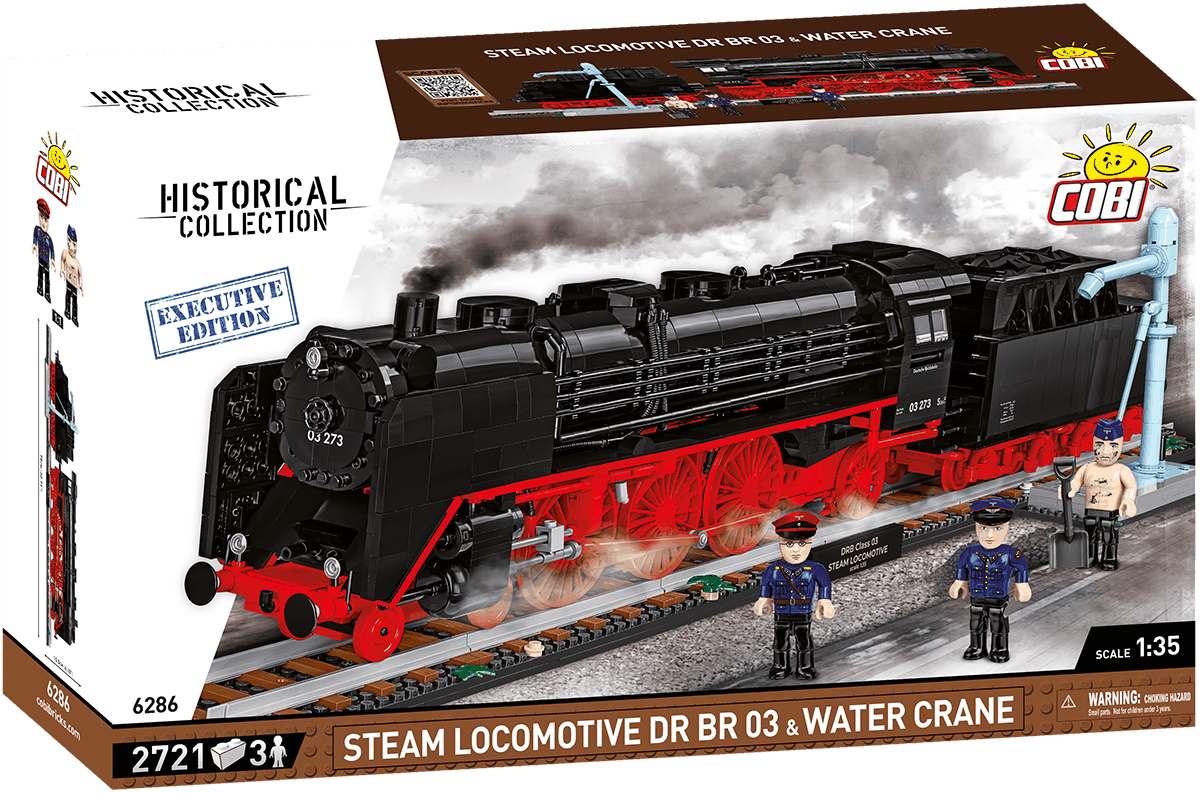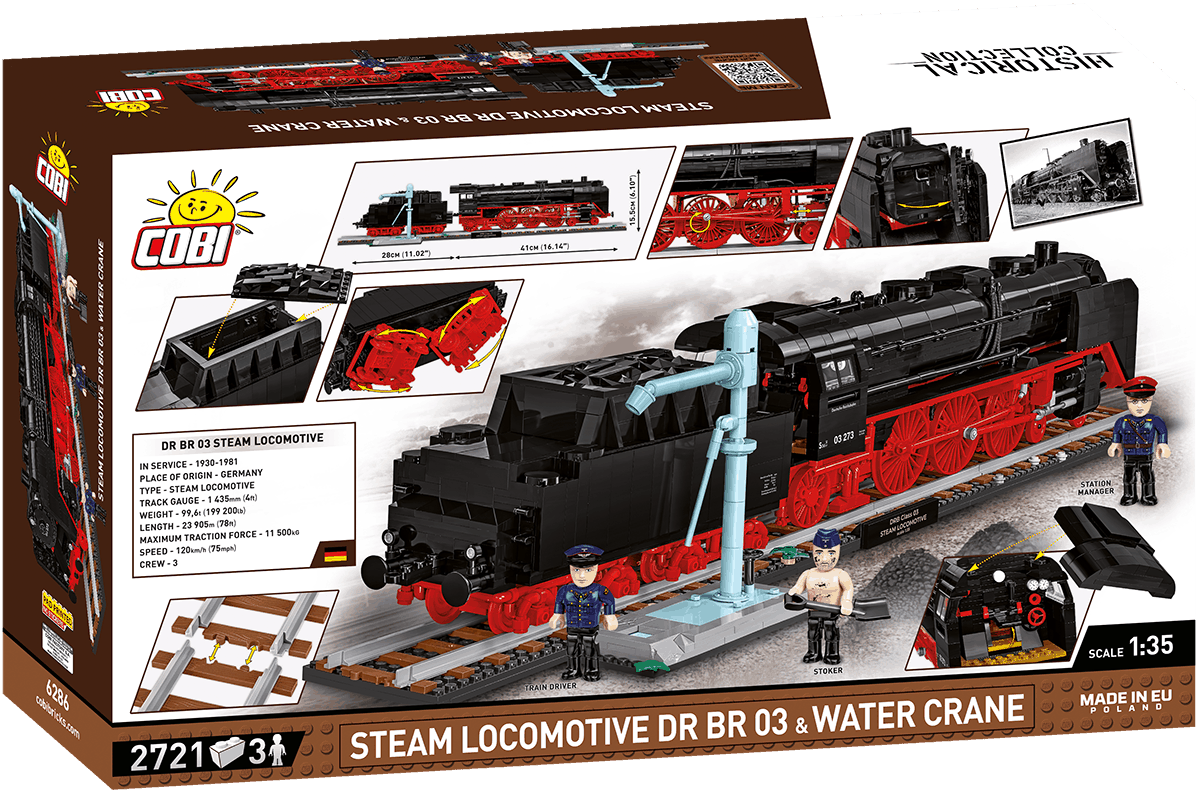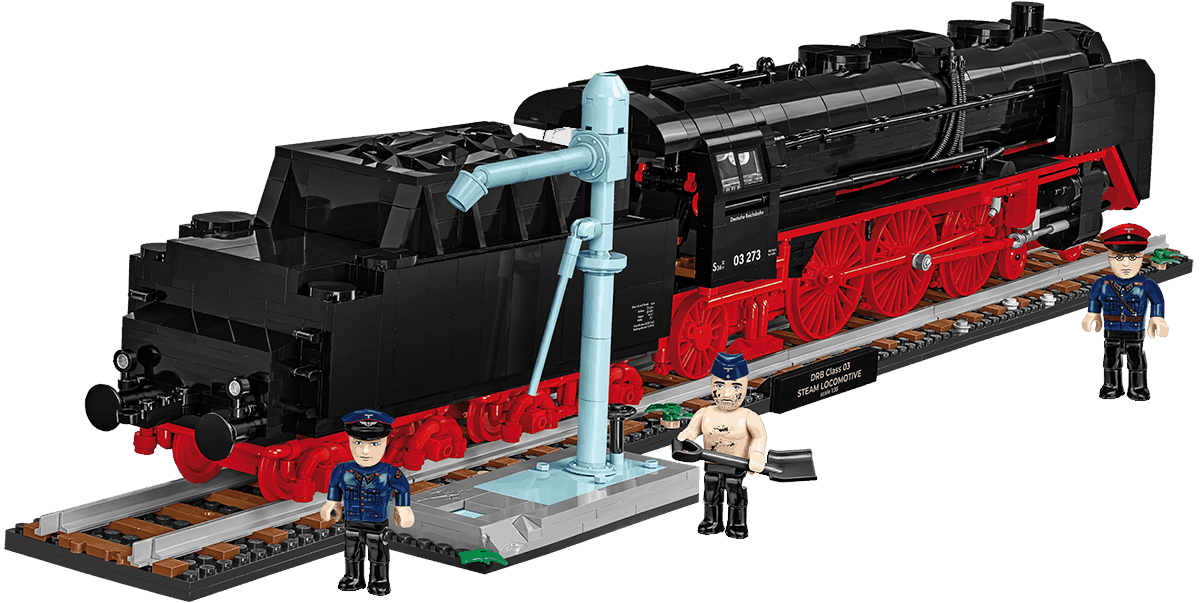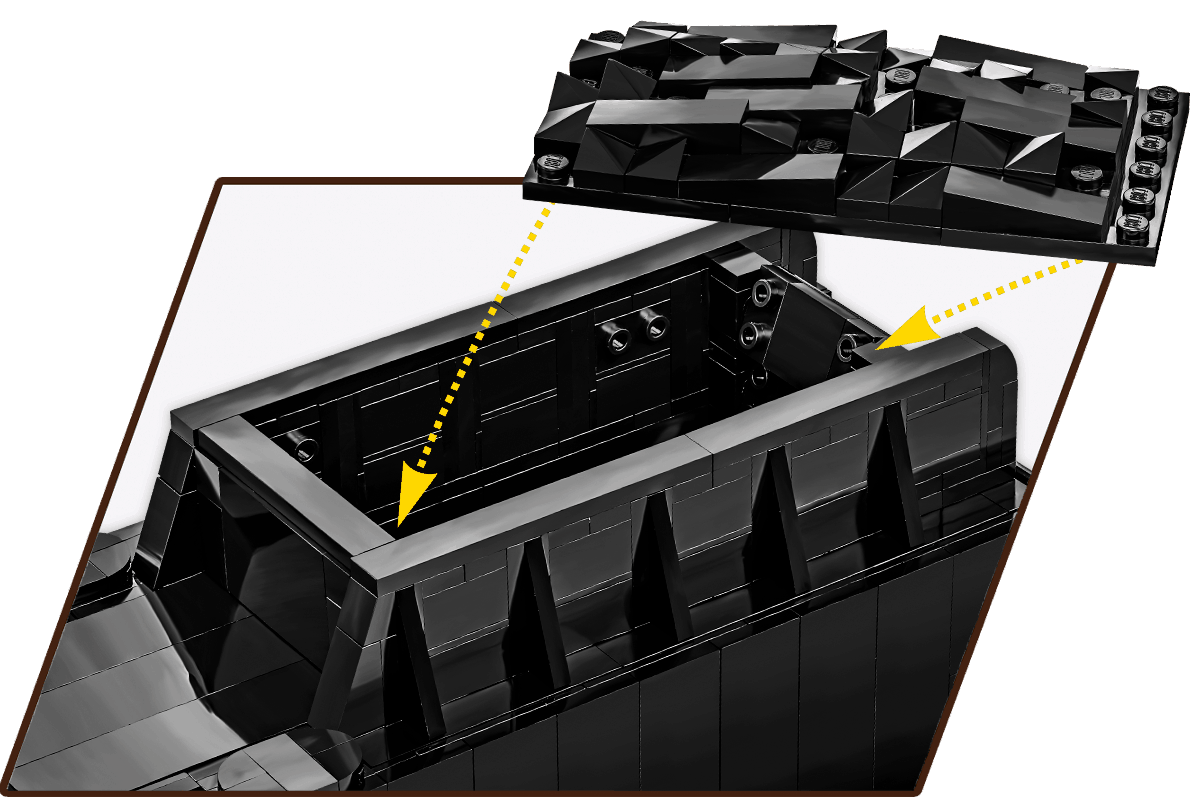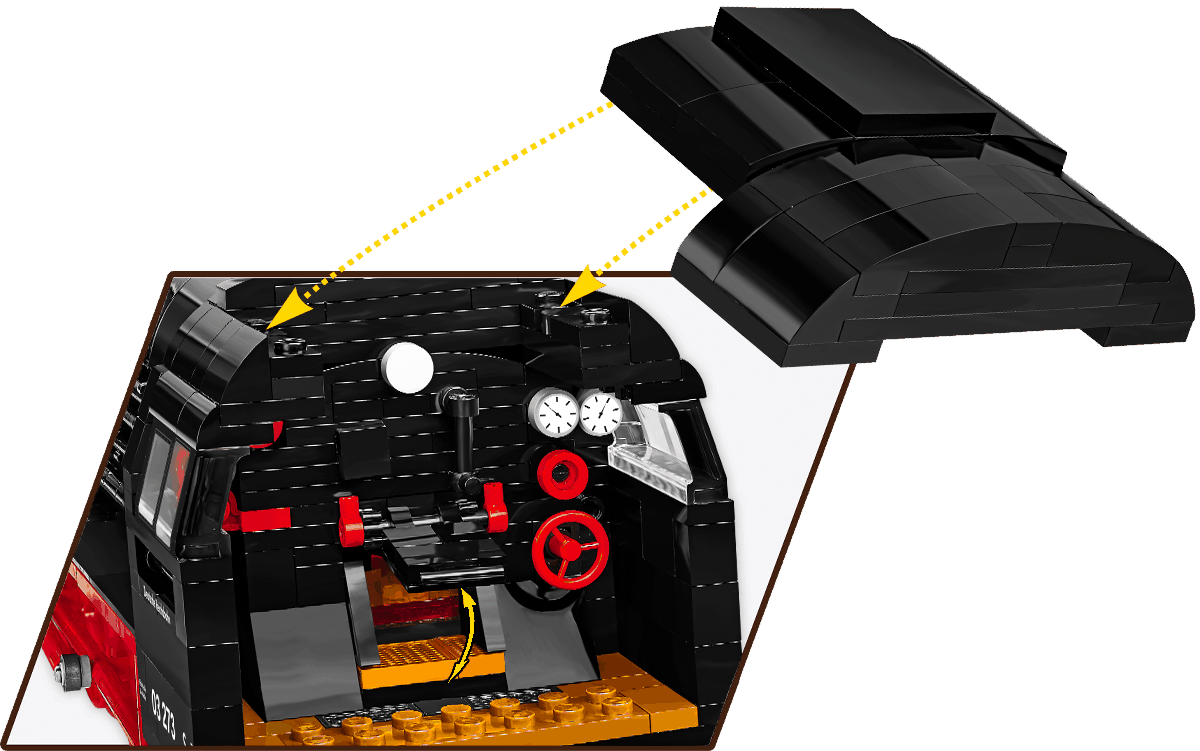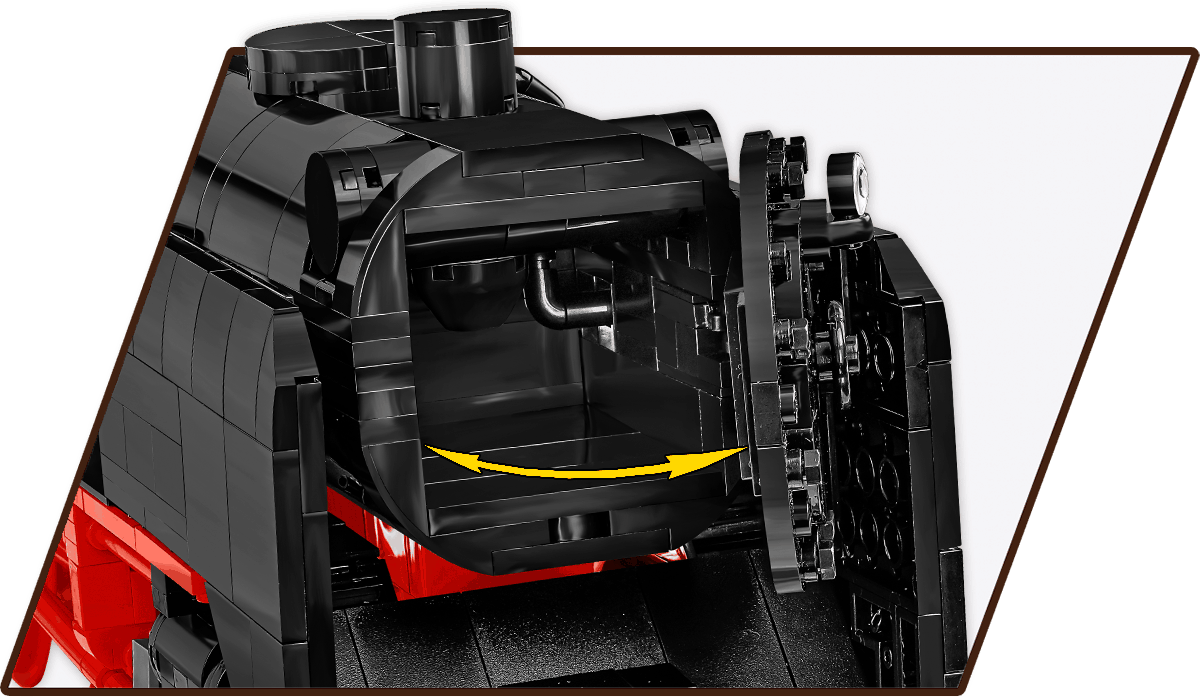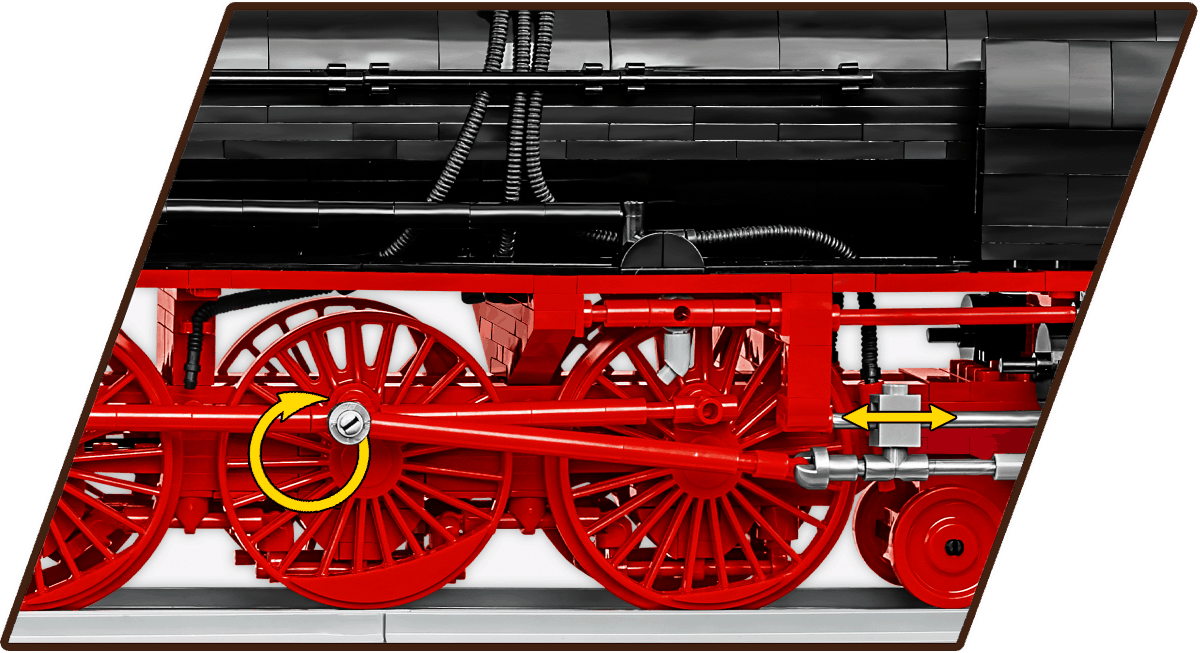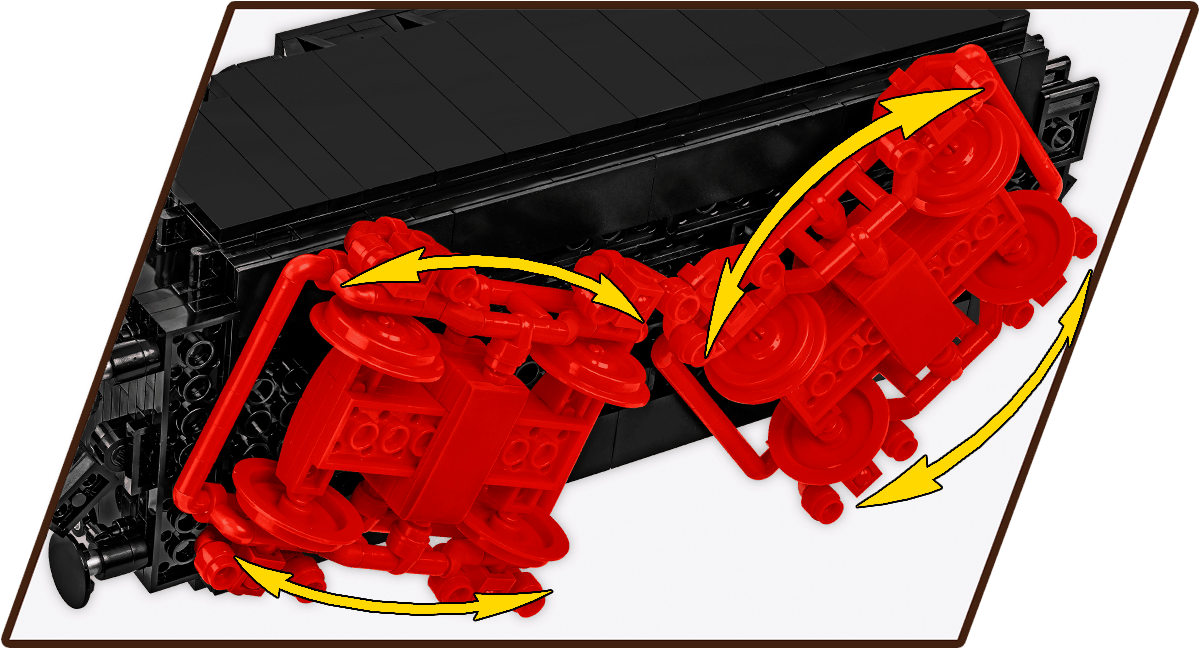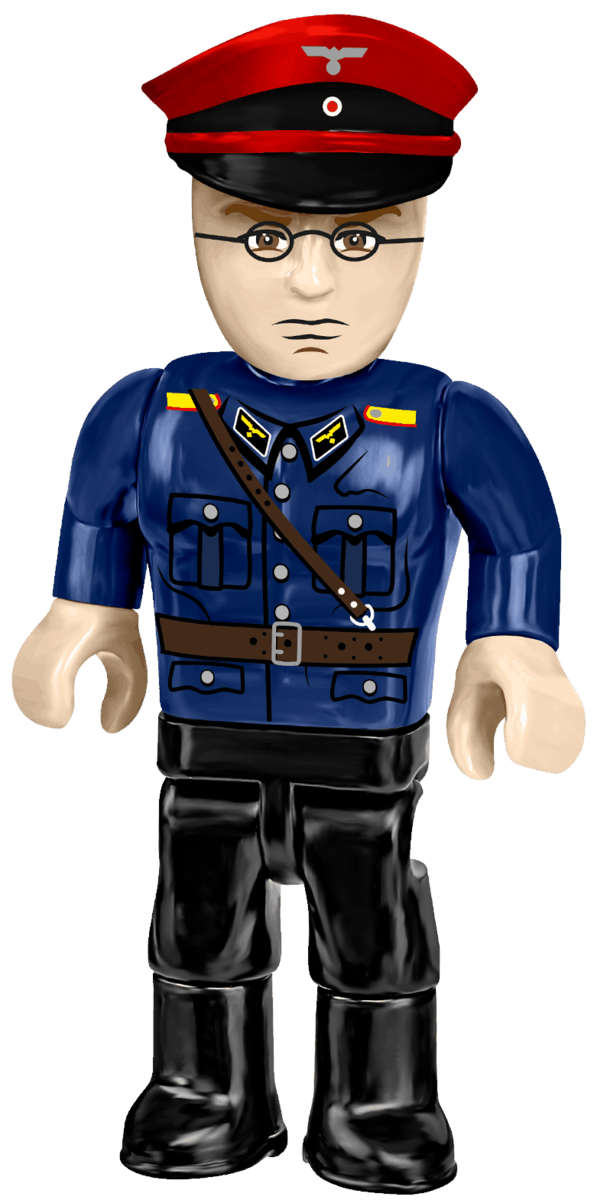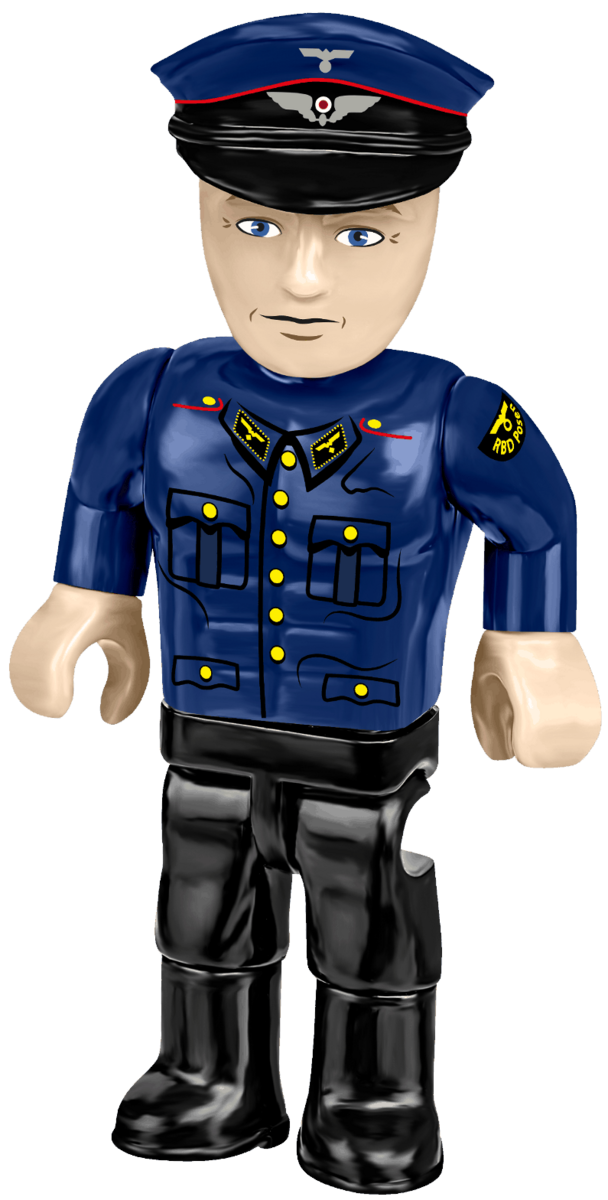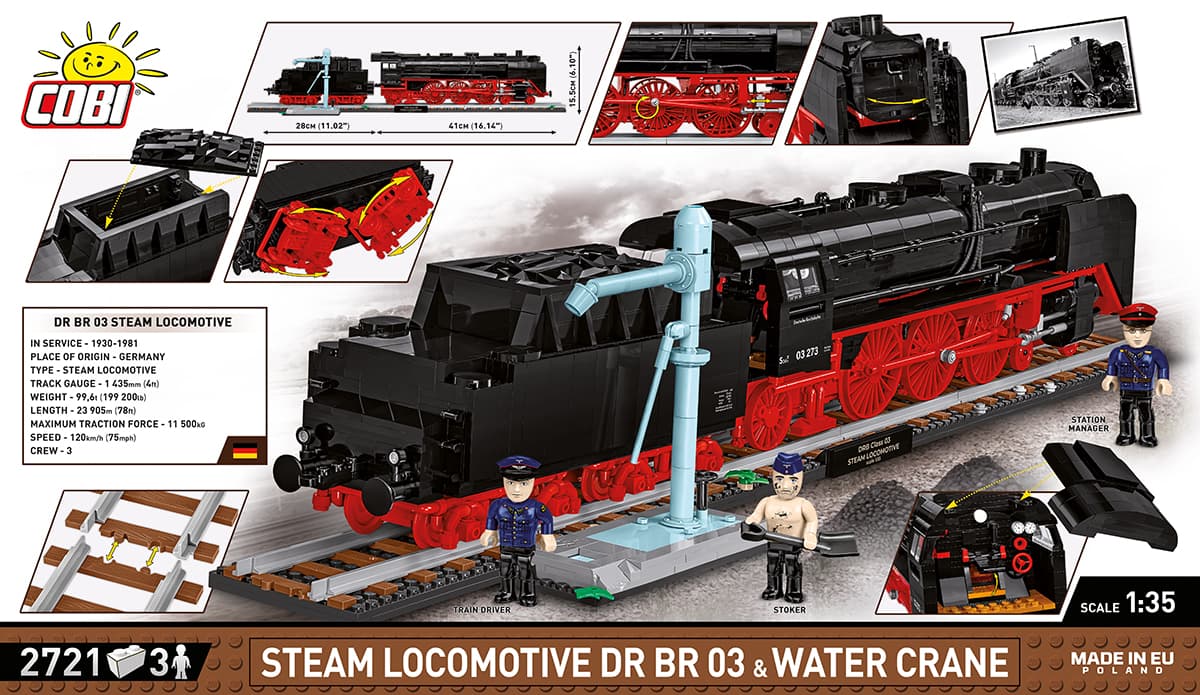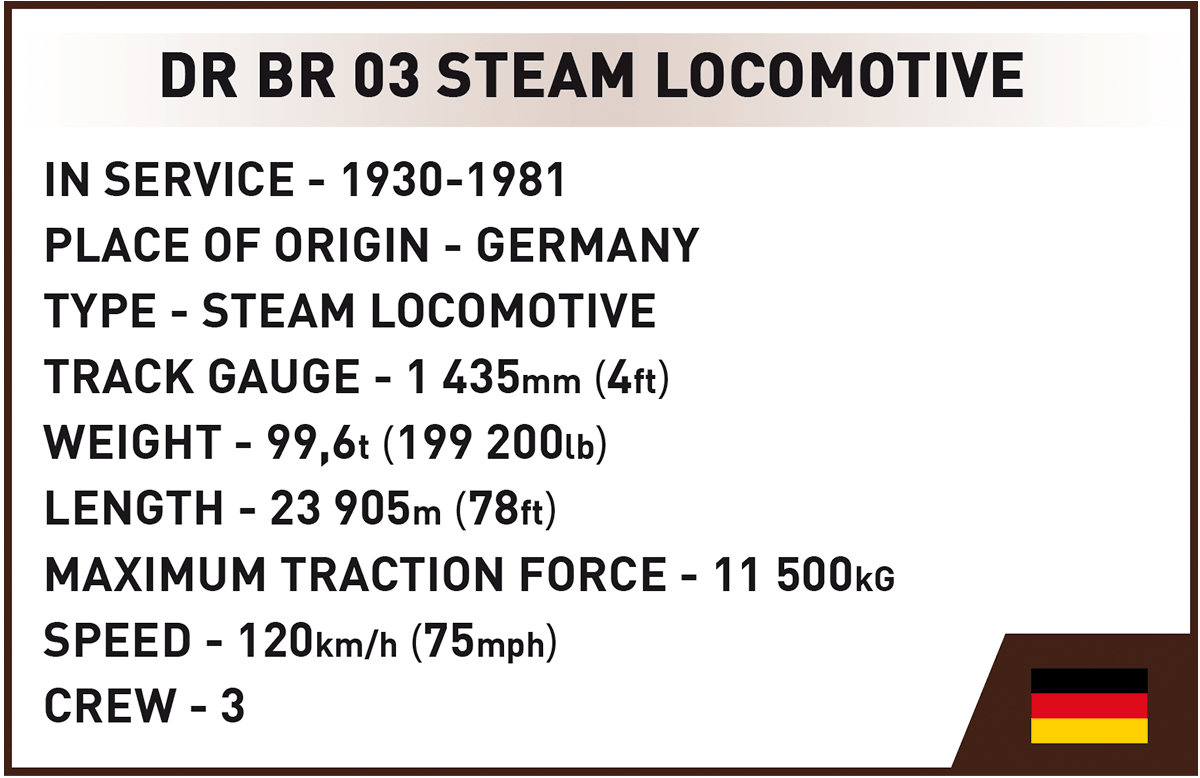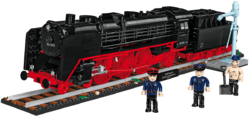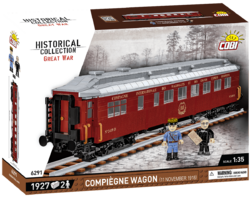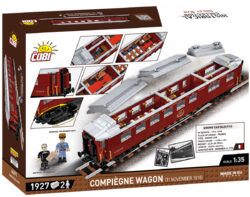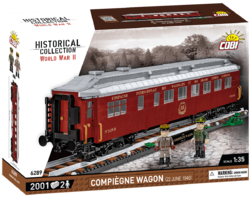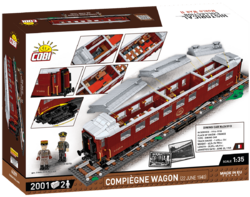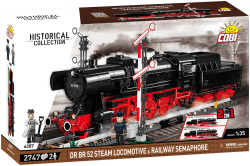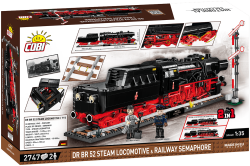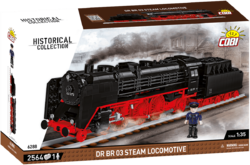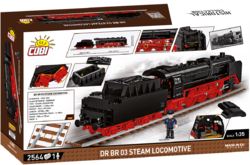| List Number: | COBI-6286 |
| EAN: | 5902251062866 |
| Warranty: | 24 months |
| Manufacturer: | COBI |
| Loyalty Points: | 30 |
| Price excluding VAT: | 3 800,35 Kč |

Did you know: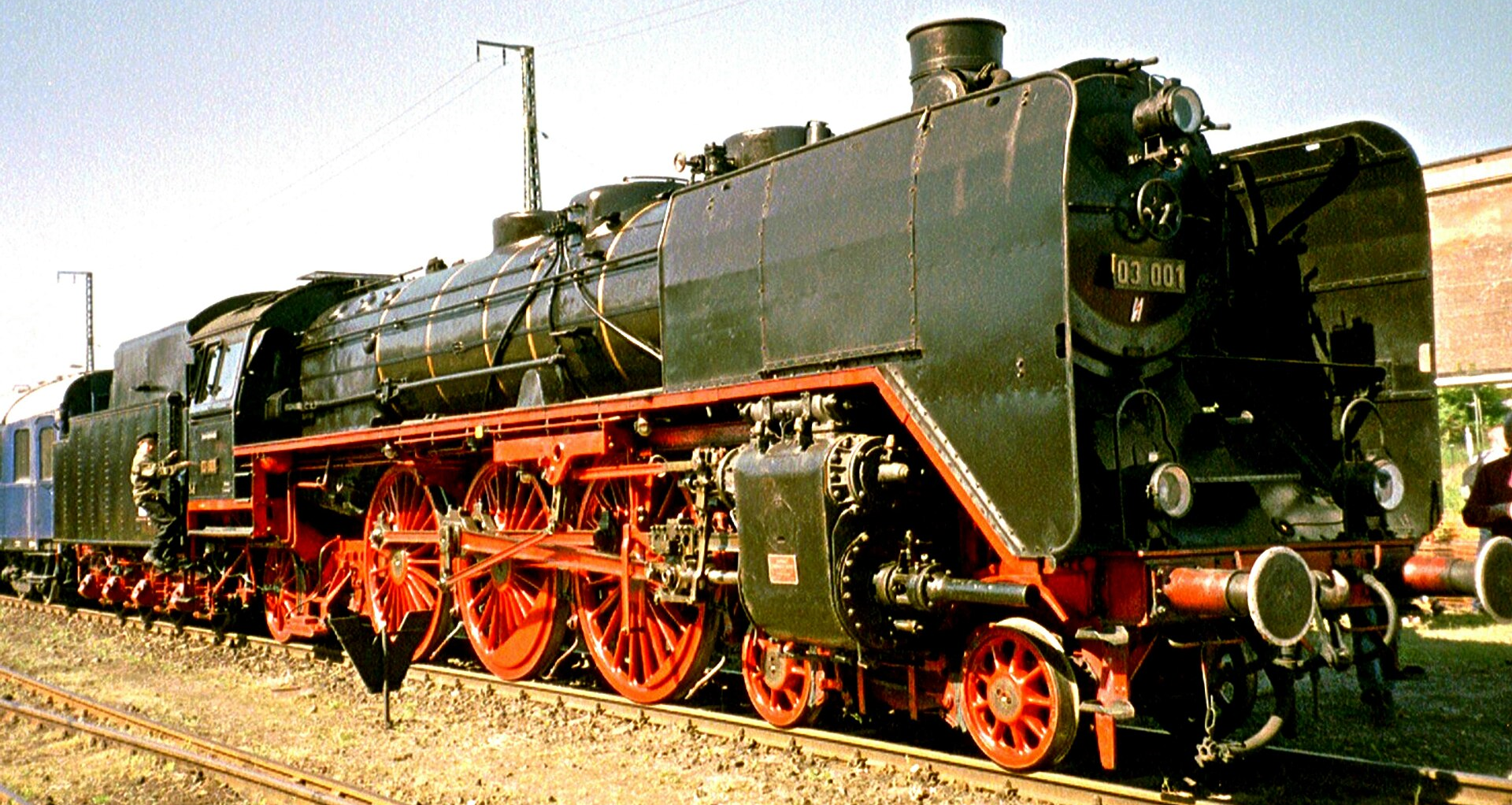
- The structural basis of the BR 03 locomotive derives from the original Prussian T 20 model developed as early as 1920.
- The first locomotives were intended for operation on routes with the demanding gradient Halberstadt – Blankenburg. To prevent loss of adhesion and reduction of braking effect when descending with a fully loaded train, the engine is equipped with the so-called Riggenbach counter-pressure brake.
- A locomotive of proven design with a bar frame and a box boiler driving the third coupled axle was the most powerful tank locomotive of its time.
- From 1922, the Reich Railways DRB operated a total of over 200 units.
- During the German war effort, fully loaded trains pulled by the BR 03 were sent to the Eastern Front. Some units were painted gray for camouflage in the winter Russian landscape.
- Interestingly, some locomotives were experimentally fitted with aerodynamic casings, which, however, were not used in regular service.
- Unit number 03 273 was built as a lightened variant for lines with lower axle loads. The first trial run took place on February 6, 1937, on the Wuppertal – Langerfeld line.
- After World War II and with the establishment of the GDR, 24 units remained under Soviet occupation administration, of which approximately 10 were converted to oil heating.
- The last unit was retired from service only in 1981. However, one locomotive continued to serve for several more years as heating for the repair workshops in Kamenz.
Locomotive technical parameters: 
- Dimensions: length 23.9 m, height 4.4 m, gauge 1435 mm
- Weight: 99 600 kg
- Grate area: 193.7 m²
- Steam engine output: 1 192 kW at 16 bar steam pressure
- Maximum speed: 120 km/h
- Tractive effort: 11 500 kg
- Maximum train weight: 635 000 kg
- Crew: 3
Tender technical parameters:
- Length: 11.1 m
- Total weight: 70 000 kg
- Water capacity: 32 m³
- Coal capacity: 11 – 22 tons (depending on type)
- Maximum approved speed: 120 km/h
From the memoirs of Kamil Nowak, 1979:
",,Refilling water on the 03 usually took us about 20 to 30 minutes. While the fireman monitored the tank filling, my duty was to walk around the engine, check its condition, and oversee the loading. The water supply was enough for about 200 km, so we repeated the process several times a day. From spring to autumn, service on the engine was actually quite pleasant. In winter, however, various pitfalls awaited us. Perhaps the worst was the line from Warsaw to Terespol. In the first months after the war, everything was completely lacking; those who survived the wartime rampage suffered from hunger and cold. When we arrived with our load at the open station in Terespol, crowds of desperate people immediately descended on us. It was a sad sight."
| Scale | 1 : 35 |
|---|---|
| Recommended age | 10+ |
| Version (series) | 11/2024 |
| Number of pieces | 2721 pcs |
| Number of figurines | 3 pcs |
| Package weight | 3165 g |
| Box dimensions | 55 x 32 x 12 cm |
| Dimensions after assembly | 78 x 10 x 15,5 cm |
| Collection | Historie |
| Contains luminous blocks | No |
| Material | Plastic |
| Compatible with other brand of kits | Yes |









